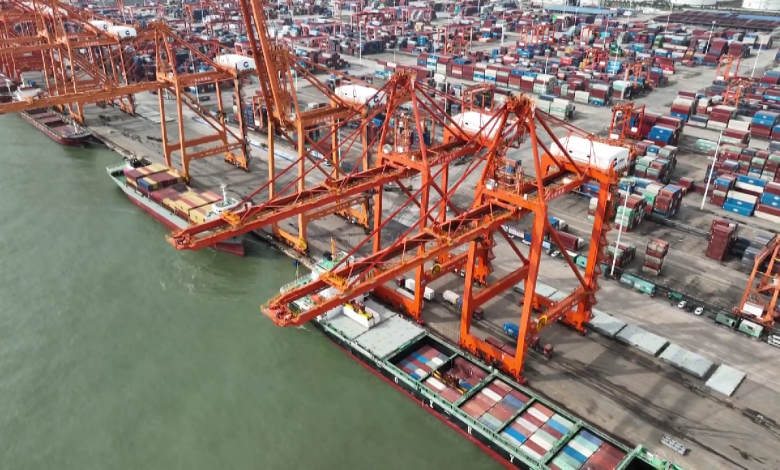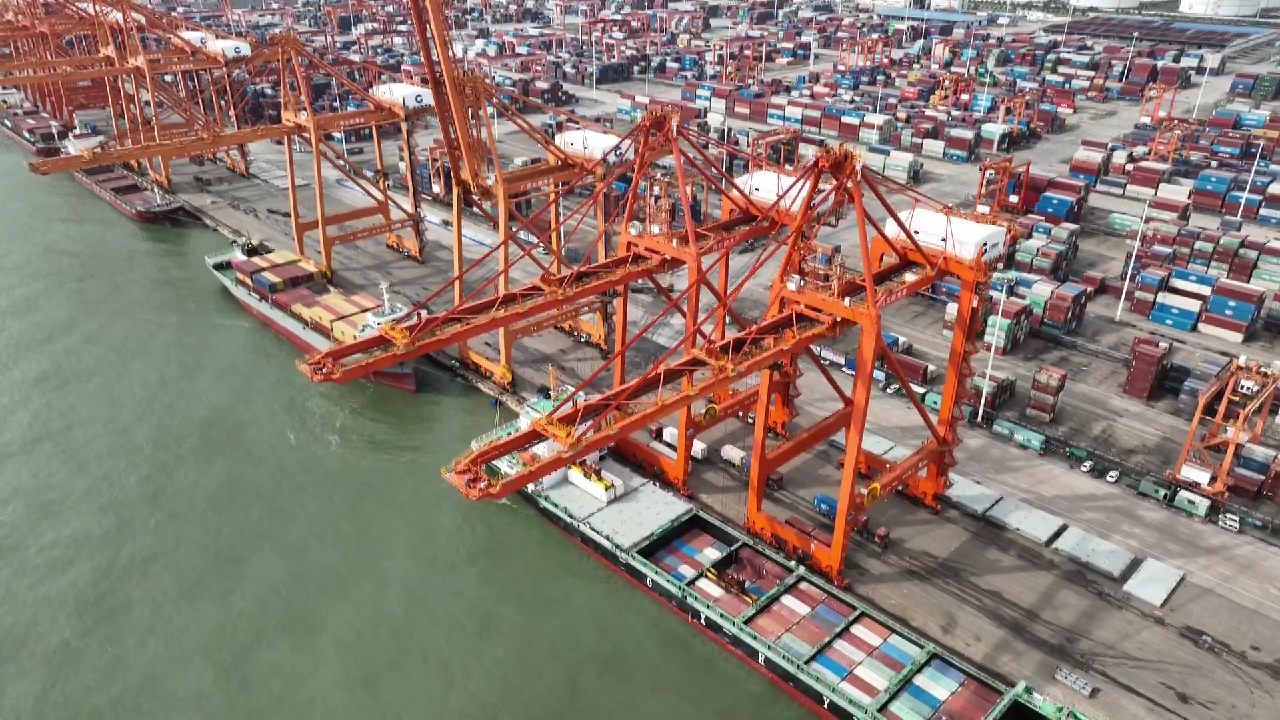Higher quality and efficiency for China-Vietnam economic cooperation


Editor’s note: Song Qingrun is a professor at the School of Asian Studies, Beijing Foreign Studies University. Sun Yitong is a Ph.D candidate from Institute of Area Studies at Peking University. The article reflects the authors’ opinions and not necessarily the views of CGTN. It has been translated from Chinese and edited for brevity and clarity.
China, as the largest economy in Asia and the second-largest in the world, plays a vital role in global development and governance. Meanwhile, Vietnam, an essential member of ASEAN, has experienced rapid economic growth, and its international influence continues to increase.
In recent years, high-level exchanges between China and Vietnam have become more frequent, and their economic and trade cooperation has continued to deepen. They are joining hands in developing stable and smooth industrial and supply chain systems and increasing investment in green and low-carbon sectors so as to benefit the people of both countries. China-Vietnam economic cooperation has significantly improved in both quality and efficiency.
<img src='https://news.cgtn.com/news/2024-08-19/Higher-quality-and-efficiency-for-China-Vietnam-economic-cooperation-1wbV3jGhfRS/img/38c6632247984d4e8f70f6c2c79cb9d2/38c6632247984d4e8f70f6c2c79cb9d2.jpeg' alt='Vietnamese durian was sold in a supermarket in Yichang, Hubei Province on May 11, 2024./ CFP'
Continued Deepening of China-Vietnam Economic and Trade Cooperation
In recent years, China and Vietnam have achieved new milestones in economic and trade cooperation, showcasing the tremendous resilience and development potential of their trade and economic relations.
In 2023, bilateral trade between China and Vietnam reached $229.79 billion, surpassing $200 billion for three years in a row. In the first seven months of this year, the bilateral trade volume approached $145 billion. China has been Vietnam’s largest trading partner for many years, and Vietnam has long been China’s largest trading partner in ASEAN.
The two countries have highly complementary economic structures. China has advantages in areas such as manufacturing and infrastructure construction, while Vietnam’s advantages lie in labor costs, geographical location, and others.
Because of these complementarities, China and Vietnam have expanded their cooperation into various fields beyond traditional goods trade, including financial services and infrastructure construction, providing new drivers for their economic growth.
Border trade between the two countries is becoming increasingly active, with promising prospects for cooperation and development.
Exports of Vietnamese agricultural products, such as durians, to China have surged, benefiting hundreds of thousands of farmers. Since the China-ASEAN (Chongzuo) Fruit Trading Center began operations in January 2023, it has completed transactions of about 17,000 vehicles worth 2.3 billion yuan ($322 million) by January 2024. Cross-border e-commerce operation centers or live-streaming bases have been established in many border cities between China and Vietnam, with the cross-border e-commerce import and export continuously growing.
<img src='https://news.cgtn.com/news/2024-08-19/Higher-quality-and-efficiency-for-China-Vietnam-economic-cooperation-1wbV3jGhfRS/img/cf9ef9efc2424875b51e5653d81b9b5c/cf9ef9efc2424875b51e5653d81b9b5c.jpeg' alt='The border gate pair of Hoanh Mo (Vietnam)-Dongzhong (China), including the customs gate of Bac Phong Sinh-Lihuo, was officially launched on June 25, 2024./ CFP'
Close and Stable Integration in the China-Vietnam Supply Chain
China and Vietnam have forged close ties and developed steadily in supply chain integration, with remarkable potential for future cooperation and development. According to data released by the General Administration of Customs of China, China is Vietnam’s largest supplier of intermediate products, constituting 60 percent of Vietnam’s total imports. The two countries have become increasingly interconnected in industrial and supply chains. Meanwhile, Vietnam needs to import large amounts of intermediate products from China, which contributes to increasingly close ties between the two countries in industrial and supply chain integration.
As Vietnam gradually becomes one of Southeast Asia’s emerging manufacturing hubs, the trade of intermediate goods between China and Vietnam continues to expand. Both the high-quality implementation of the Regional Comprehensive Economic Partnership (RCEP) and the establishment of the ASEAN-China Free Trade Area 3.0 provide new opportunities for broader industrial coordination, division of labor, and cooperation between the two countries. They are consistently building mutually beneficial partnerships in industrial and supply chains and fostering a better institutional environment for bilateral collaboration.
<img src='https://news.cgtn.com/news/2024-08-19/Higher-quality-and-efficiency-for-China-Vietnam-economic-cooperation-1wbV3jGhfRS/img/909e1cd30d354cb7b16e2cfb70af35ae/909e1cd30d354cb7b16e2cfb70af35ae.jpeg' alt='The Cat Linh-Ha Dong elevated railway in Hanoi, completed by a Chinese company, is a landmark project of infrastructure cooperation between China and Vietnam under the Belt and Road Initiative./ CRCC'
Low-Carbon Investment Cooperation Benefiting the People
China is one of Vietnam’s major sources of foreign investment, with significant stock, wide coverage, and rapid growth in investment cooperation. The two countries are advancing collaboration on key projects. Investment cooperation is steadily moving forward in green development, low-carbon economy, and other sectors, which have emerged as fresh areas for bilateral investment growth.
Over ten Chinese companies have established photovoltaic industry bases in Vietnam since 2014, forming the largest photovoltaic industry cluster in Vietnam and China’s largest overseas production base of photovoltaic products.
In the future, China and Vietnam will no doubt keep strengthening experience sharing and demand matching in green and low-carbon fields. They will solidly promote pragmatic cooperation on low-carbon projects and deepen communication, exchanges, and cooperation across the entire industrial chain of the green and low-carbon economy.
At the same time, with Vietnam as a base, China can actively facilitate the interconnection of green financial standards and the flow of green capital between China and ASEAN.
In summary, China-Vietnam economic cooperation spans multiple layers and various fields, including trade relations, supply chain integration, and low-carbon investment cooperation, which will effectively enhance the development momentum of their favorable relations.


 Offers free spin
Offers free spin